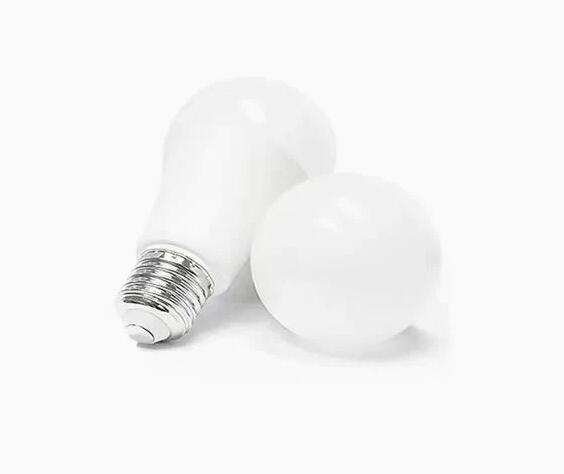The Role of LED Bulbs in Reducing Light Pollution
2024-10-26
In recent years, light pollution has become a prominent concern for both environmentalists and urban planners. With artificial light sources illuminating streets, buildings, and public spaces around the clock, our night skies are losing their natural darkness. Light pollution impacts ecosystems, disrupts human sleep cycles, and obscures our view of the stars. However, the rise of LED (light-emitting diode) lighting technology offers a promising solution for addressing light pollution. In this blog, we’ll explore how LED bulbs contribute to reducing light pollution and why they’re essential for creating more sustainable and starlit skies.
Understanding Light Pollution and Its Impact
Light pollution occurs when artificial light interferes with the natural darkness of the night sky. It typically falls into four main categories:
1. Glare: Excessive brightness that causes visual discomfort and impairs night vision.
2. Skyglow: The brightening of the night sky over urban areas, which obscures stars and natural light.
3. Light Trespass: Unwanted light spilling over into areas where it’s neither needed nor wanted, such as streetlights shining into homes.
4. Clutter: Overlapping sources of bright lights, such as neon signs or multiple streetlights, which create visual chaos.
Each type of light pollution disrupts natural rhythms in humans and animals. For example, artificial light exposure can interfere with sleep, harm nocturnal animals, and even affect plant growth. In addition, skyglow severely impacts astronomical observation, depriving communities of dark, star-filled skies.
The Benefits of LED Technology in Reducing Light Pollution
LED technology offers significant advantages over traditional lighting technologies, such as incandescent and high-pressure sodium lamps. Let’s look at some of the ways LED bulbs help in reducing light pollution:
1. Directional Lighting:
- Unlike traditional bulbs that emit light in all directions, LED lights are highly directional. This means they can be focused precisely on areas that need illumination, significantly reducing light spillover. For example, streetlights equipped with LEDs can be angled downward, minimizing light that would otherwise be directed into the sky or nearby properties.
2. Controlled Color Temperature:
- LEDs offer a range of color temperatures, from warm, yellowish tones to cool, blue-white light. Cooler, blue-rich lights contribute to skyglow because their shorter wavelengths scatter more easily in the atmosphere. By opting for warmer LEDs with temperatures around 3000K or less, we can reduce skyglow and its impact on the night sky.
3. Lower Luminous Intensity:
- LEDs can achieve the same brightness level as traditional lights with significantly lower energy output, which also reduces unnecessary brightness. This allows for effective lighting that reduces glare, improving night visibility for both pedestrians and drivers.
4. Dimming Capabilities:
- Many LED systems offer dimming capabilities, allowing them to adjust brightness levels based on the time of night or environmental conditions. Automated dimming solutions can be especially useful for reducing light pollution, as they ensure lights are only as bright as necessary.
5. Longer Lifespan and Durability:
- LEDs last far longer than traditional bulbs and maintain consistent light output over time. This durability reduces the need for constant bulb replacement and reduces the tendency to “over-light” areas to compensate for diminishing brightness.
How LED Bulbs Are Being Used to Combat Light Pollution
1. LED Street Lighting Initiatives:
- Many cities worldwide are replacing older streetlights with LED alternatives. These new streetlights have better light control, minimizing glare and reducing upward light leakage. LED streetlights also allow cities to install shields and fixtures that direct light downward, which significantly reduces skyglow.
2. Shielded Fixtures for Residential Use:
- Homeowners are encouraged to install shielded, outdoor LED fixtures that direct light only where it’s needed. This approach prevents light trespass and minimizes the spread of unnecessary light across residential areas.
3. Lighting Ordinances and Regulations:
- Some municipalities are introducing ordinances that mandate the use of low-intensity LED lighting for businesses and homes. These regulations often specify acceptable color temperatures and encourage dimmable LEDs for outdoor installations, leading to a substantial decrease in light pollution.
4. Dark Sky Initiatives:
- Organizations like the International Dark-Sky Association (IDA) promote using LED bulbs that meet specific criteria to reduce light pollution. IDA-approved fixtures often feature low-intensity, warm-colored LEDs that minimize skyglow and glare.
LEDs and Sustainable Nighttime Environments
One of the most promising aspects of LED lighting is its ability to support sustainable nighttime environments. By optimizing lighting based on necessity, LED technology encourages a more balanced relationship between humans and nature. Darker night skies help protect nocturnal species, improve human sleep quality, and promote safer, more comfortable urban environments. And for astronomers and stargazers, LEDs represent a critical step toward restoring clear views of the cosmos.
LED lighting technology is a valuable tool in the fight against light pollution. By offering focused, dimmable, and color-controlled lighting, LEDs make it possible to illuminate spaces effectively without compromising our night skies. As more cities adopt LED lighting solutions, we move closer to creating environments that respect the balance of light and darkness, protecting ecosystems and giving future generations a chance to experience the beauty of starry nights.



